JAPANESE GIRLS
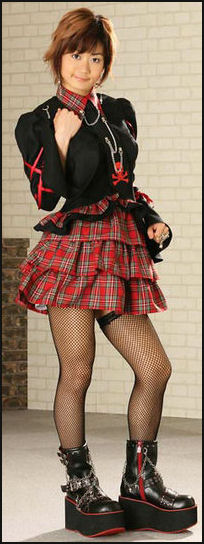
Girls generally outperform boys in school and study as hard or harder but are often taught that finding a husband is more important that choosing a career.
The Year of the Fiery Horse, 1966, was considered to be bad luck for girls. Girls born that year were regarded as future "man eating women" and the birthrate in 1966 dropped by 25 percent.
One Japanese girl who spent some time in the United States told the Los Angeles Times, "Japanese girls feel insecure if they don't do what other people are doing...What they are concerned about most is what they look like." She said her friends in the United States were more frank, while Japanese girls tend to stick to superficial matters out of fear of being disliked.
Junior high school girls who enter the work place after graduating from junior high school are referred to as "golden eggs" because their parents can not afford to continue paying for their education. "Barbies" is a term used to describe teenage girls obsessed with Western fashions.
An “ike-ike onna” is a young woman who wears a bright-colored miniskirt, has died hair and carries an expensive handbag. A “ko garu” is a high school girl who dresses like an “ike-ike onna”.
Good Websites and Sources: Danny Choo site dannychoo.com ; Wearing Miniskirts in Winter chinasmack.com ; Yamamba and Ganguro julieinjapan.com ; Paper on Gasu Rori pdf file inter-disciplinary.net ; Lolita Look bookmice.net ; Wikipedia article on Parasite Singles Wikipedia ; Schoolgirls xorsyst.com/japan ; Japanese Schoolgirl Confidential Oxford University Press
Links in this Website: JAPANESE FAMILIES Factsanddetails.com/Japan ; JAPANESE MEN Factsanddetails.com/Japan ; JAPANESE SALARYMEN Factsanddetails.com/Japan ; JAPANESE WOMEN Factsanddetails.com/Japan ; JAPANESE GIRLS AND YOUNG WOMEN Factsanddetails.com/Japan ; JAPANESE MOTHERS Factsanddetails.com/Japan ; JAPANESE WORKING WOMEN Factsanddetails.com/Japan ; KAWAII, GOSU-RORI, AND STREET FASHION IN JAPAN Factsanddetails.com/Japan ; TAKARAZUKA, JAPANESE ALL-FEMALE THEATER Factsanddetails.com/Japan ;GEISHAS Factsanddetails.com/Japan ;GEISHAS AND THE MODERN WORLD Factsanddetails.com/Japan ;JAPANESE CHILDREN Factsanddetails.com/Japan ; JAPANESE TEENAGERS AND YOUNG ADULTS Factsanddetails.com/Japan
Girl Problems in Japan
In recent years there the amount of crime and delinquency commited by girls has increased. Young people have also increasingly been the victims of crime. Attention on the issue became national news in July 2003 after a man lured four 6th grade girls from Shibuya — a shopping district in Tokyo popular with young people — to his his apartment and kept them captive there. The girls were able to escape. The man committed suicide.
The stereotype bad girl has dropped out from school, manicures her fingernails with outrageous colors, wears lots of make up, sells her underwear to adult shops and prostitutes herself to older men to buy designer bags. Many girls make money on the edge of the sex trade by handing out tissue packages with advertisements for massage parlors.
Yamamba and Ganguro
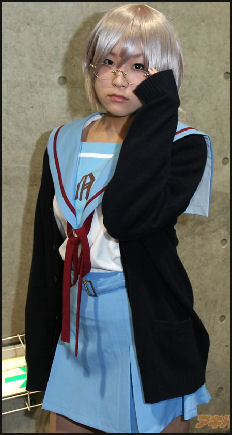
“Yamamba” ("Old mountain hag") and “Ganguros” ("black faces"), or “gyaru” for short, are names given to girls who have orangish, tanned faces and streaked orange hair and wear white lipstick and eye-shadow, thick make-up, colorful tops and miniskirts and massive platform shoes. They are often seen in groups of four or five, chatting on sequin-studded cell phones or applying polish to their oversized fake naisl. Some have their faces painted like pandas or goblins and look like horror movie versions of the Supremes.
According to 2002 research by Tadahiko Kuraishi of Kokurgakuin University ganguros “appeared suddenly in Shibuya in 1998" and “were covered by the various media. Mostly in their mid-to-late teens, with the majority being 15- to 18-year-old high school girls from Tokyo, Chiba and Kanagawa areas. Their hair is either dyed brown or bleached white, and their faces are painted or tanned a deep brown, black...Group movement is fundamental.”
For a while it seemed that the ganguro movement was a fad that would only be around for a couple of years. But these girls have endured and are seen in Osaka and other cities as well as in Tokyo. In Shibuya gyaru-circles have been formed. The leader of one called Angeleek told the Asahi Shimbun, “We’re as gyaru as you can get. There are other gyaru circles here in Shibuya, but we’re what they aspire to be.”
There are said to be 300 gyaru circles with 10 to 15 members each for a total of around 4,000 gyaru in the Tokyo area. The mecca for them is the 109 and 109-2 shopping emporiums in Shibuya. They have a bad reputation. Many shopkeepers and restaurant owners don’t want them in their establishments. Some are regarded as shoplifters, drug users and “enjo-kosai” (schoolgirl prostitutes).
Angeleek is said to have 400 members. They organize dances, make up lessons and hold regular meetings and have male support groups. Many members aspire to be hair stylista, make up artists or nail artists. Some spend ¥30,000 a month on make up and accessories. When they go out they mainly walk the streets and alleys to be stared at and hang out at fast food restaurants, ordering a minimum of food and bringing their own drinks.
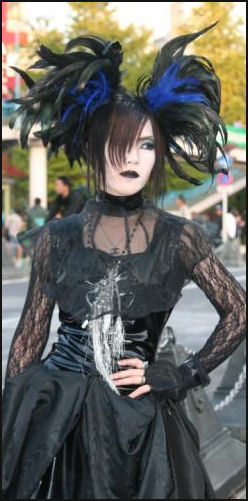
Gosu-style cosplay Among the most popular magazines for Tokyo “ gyaru” is Koakuma Ageha, whose name roughly translated to “devilish butterfly.” It is packed with information about fashion, hairstyles, accessories and shoes for women into the “ gyaru” look. With a circulation of 350,000, it is aimed primarily at bar hostesses but has broad readership that includes school teachers and office workers.
Gosu-rori Look
“Gosu-rori” is a street fashion unique to Japan. A colloquial abbreviation of the terms “Gothic” and “Lolita,” it describes teenage girls and young women who merge punk fashions with the little girl look to end up looking like vampires dressed like Goldilocks. The style is associated with Harajuku, Tokyo, where there a number of boutiques that specialize in Gosu-rori clothing and accessories. A gallery show featuring the fashion was called “GOTH: Reality of the Desperate World.”
The term “Lolita” comes from Vladimir Nabakov novel’s about a middle-aged man’s obsession with a pre-teenage girl and is used to describe women that dress up like little girls or dolls. Gothic originally described a style of cathedral architecture in 12th to 15th centuries and was used t describe a genre of horror and fantasy novels in 18th and 19th century that included Bram Stocker’s “Dracula” and Mary Shelley’s “Frankenstein”. Among the punk generation “goth” has come to describe people that dress in a dark manner that calls to mind vampires and monsters. As a fashion is has origins with the Glitter rock and punk scenes in Britain in the 1970s.
The Gothic look in Japan is alive as a street fashion and the elaborate stage costumes and make-up of glam rock bands known in Japan as Visual-Kei.
Lolita Look
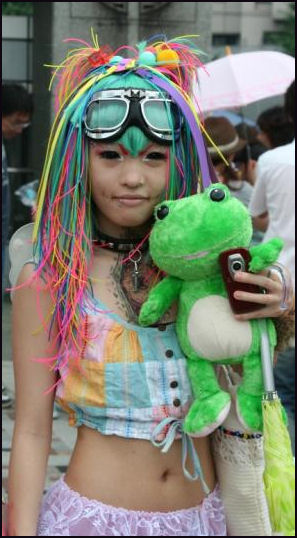
rori-style cosplay Some Gosu-rori emphasize the Lolita look, others the Gothic style, with the Lolita look being particularly strong and manifesting itself as girls in French maid outfits or schoolgirl uniforms. The Lolita look emerged in the 1980s and merged with Gothic and punk fashions at a time when these looks were emerging with cyber fashion in Europe and North America.
In its most elaborate form Gosu-rori girls dress in skirts that flair wide at thigh level with the help of hoops, petticoats and panniers, and wear towering platform shoes and frilly blouses augmented by bows, ribbons, ruffles and taffeta. Some hairstyle are works of art unto themselves, piled high with bangs and curls. Some wear maid-like head accessories, Other don tiaras or even crowns
The Gosu-rori look has become entrenched enough that are Gosu-rori magazines and lines of clothes by designers such as Baby, Angelic Pretty and Stars Shine Bright that specialize in the look. Yusuke Tajima, editor of Kera, a magazine devoted to Gosu-rori, told the Daily Yomiuri, “With the birth of the Gosu-rori category, Lolita attracted further attention, not only as a genre of fashion but also as a lifestyle as a whole...Gosu-rori fashion with the taste of “kawaii” must have shocked people in the West as it is clearly different from [earlier] Gothic fashion, with its dark flavor.”
Angelic Pretty designer Asuka told the Daily Yomiuri, “What we design is not moderately kawaii or sweet but extremely kawaii or sweet.” Pink is often their color of choice. At a Gosu-rori fashion show all the Angelic Pretty models dressed in pink and carried a stuffed animal, bouquet or flower basket to enhance their girlish image.
Bad Girls and Scouts in Shibuya
Shibuya, a popular shopping and entertainment district in Tokyo, has become a primary place for young people, particularly girls, to hang out into the wee hours of the morning. One 16-year-old Shibuya girl told the Daily Yomiuri, “I often spend the night in the streets or at karaoke shops, or I stay with men who ask me for a date. I’ve not returned home for several days now, because everything is boring at home, where I have nothing to do.”
Particularly disturbing is the number of young girls seen at night talking with unsavory looking middle-age men. The men will strike up a conversation, and ask the girls if they want something to eat. When the girl above was asked if she engaged in “compensated dating: (a euphemism for teenage prostitution), she said, “Why not? I can earn ¥60,000 a date.
There are also large numbers of male “scouts” in their 20s who try to lure young girls into some endeavor, usually bad. One Shibuya regular told the New York Times, “Every scout is trying to get a girl into his business. There’s the store scout, the restaurant scout, the sex business scout, the entertainment industry scout, the fashion magazine scout.”

Japanese Schoolgirls
The biggest trendsetters — and fashion slaves — in Japan are teenage schoolgirls. They make up only four percent of the population but have a surprising amount of marketplace clout and a lot of cash to throw around. According to one study 68 percent of all Japanese teenagers receive a monthly allowance of $300 or more (compared to only 28 percent for American youth). They also receive regular "six pocket" cash gifts from their two parents and four grandparents. While boys tend to spend their money on video games, girls spend their on the latest fashions.
As one 17-year-old girl told the Los Angeles Times, "We want to be cute. We want to have fun. We like the same things." Most girls have cell phones and if they see something they like they can spread the word quick. Some companies have even hired girls to spread the word about new products by telling their friends to keep it a secret.
Fads travel very fast in the schoolgirl community. If a product is really hot it can spread in less than a week. If five percent of the girls like something 60 percent can be into it in a month.
The Japanese schoolgirl look is becoming increasingly popular abroad. In places like Barcelona you can find high school girls dressed in “ nanchayye sifuku “ (pseudo school uniforms) with Japanese-style accessories, wearing the uniforms in ways popularized in Japan. One Chinese girl told the Yomiuri Shimbun that Japanese school uniforms are like “something from a fantasy” and “symbolize freedom.”
Schoolgirls, Maids and Sex, See Sex
Single Women in Japan
More than 54 percent of Japanese women are still single when the reach the age of 30 compared 27 percent of American women. Between 1985 and 1995, the number of women in their twenties who had never married jumped from 24 percent to 50 percent, and the number of single women in their 30s doubled to 20 percent.
Single women in their 30s were once the object of pity but that is no longer the case. Many are happy with independent life. One 32-year-old woman told Newsweek, "If I never have children, then I will never cross the line into that other world. And I can't decide if that would be good or bad." One told Time, “Most of my married friends say they have separate rooms and their husbands are always too tired for sex..” A study in 2005 found that 73 percent of single women are perfectly happy being single,
See Independent Women Above
Attention to single women was raised by the best-selling book “Underdogs Howl” — a sort of Japanese answer to “Sex in the City” or “Brigette Jones’s Diary” — by Junko Sakai. In the book Sakai explains that many single women in their 30s take flamenco dancing lessons because the have an excess of energy that would normally be spent on raising kids. She then explains about the all the other ways that single women can enjoy themselves. The book was not only popular it helped single women not feel ashamed.
Parasite Singles
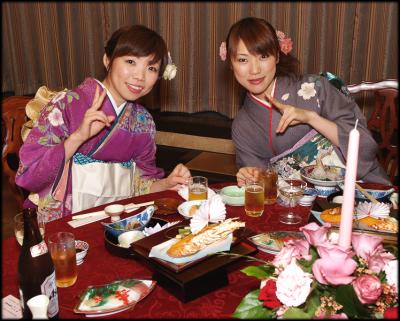
Single working women, a saying goes, are considered the richest people in Tokyo. Many put off marriage and live with their parents so they can earn money to blow and enjoy life. They are sometimes referred to as “parasite singles,” a reference to a Japanese horror movie, “Parasite Eve”, about an alien who feed on unsuspecting human hosts.
Parasite singles are often described as “wagamama”, which means selfish and willful. One young woman told the New York Times, "maybe I am “wagayama”. I don't know. I don't want to get married eventually, but I have to find the right guy. Meanwhile, I want to look cool."
Parasite singles fill their lives with shopping, often at Hermes, Gucci or Bulgari, hanging out with other parasite singles at trendy cafes, taking English conversation classes and visiting galleries. They date, sometimes through dating services, but are not interested in a serious boyfriend. Many continue living with their parents well into their 30s. Some develop addictions to cell phones and designer products. More practical ones mix high-end designer stuff with cheap stuff from Uniqlo (a cheap Japanese version of The Gap).
A typical 26-year-old parasite single earns $28,000 a year working as a bank teller but drives a BMW, carries a $2,000 Chanel handbag and a Prada purse, and vacations in Hawaii and Switzerland. A young woman who is particularly fond of Chanel products is often called a “Chanelah”.
Because single women such as this have so much disposable income many products are geared toward them, especially things like cell phones, small cars and designer accessories. Some economists have said they are the main force to get consumer spending going when the Japanese economy is in a slump.
Gyaru-Mamas
"Gyaru-mama" refers to mothers who gave birth in their teens or 20s and stick to flashy fashion and makeup despite being busy with child rearing. The word became in vogue about five years ago after it appeared frequently in magazines. Explaining a gyaru-mama is, a 26-year-old gyaru-mama named Aki told the Metropolis: “I think it describes a mother who’s proactive and always trying her best — as a mom, as a wife, and as a woman — in whatever she does, whether it’s raising kids, keeping house or looking good. The woman was 26 and became a mother when she was 21.
Young mothers tend to feel they don't fit in when they attend community-based child-rearing lectures held by their local governments. As a result, they started writing blogs on child rearing, leading the activities to form circles called "Mamasa" (Mamas circles). "Some of those young mothers used to give their parents a hard time when they were middle and high school students," Yamashita said. "They tend to realize the hardships [that their parents experienced] for the first time when they became a mother.”
One being a gyaru-mama Aki, regarded as the queen of gyaru-mamas, said, “I used to get normal mothers talking behind my back about my flashy clothes and nails, but now people understand that this is a gyaru-mama’s right. There was one magazine survey where junior-high and high-school girls picked gyaru-mama as their number one dream occupation. Being a mother isn’t an occupation, but? [laughs]. [Source: James Hadfield, Metropolis, December 9, 2010]
On raising her child gyaru-mama style, Aki said she sometimes coordinates her child’s outfit with what she’s wearing. “I get a kick out of coordinating things, so I’ll give us the same hair, go out in matching colors or styles, or sometimes with exactly the same outfits. I’ve got a daughter, so I do “osoro-koode” [outfit matching] a lot. On shopping places Aki said, “The main ones are Shibuya 109 and — I live in Yokohama, so — Yokohama Cial or Sakuragicho. I often go to Sakuragicho, as it’s a really nice place to take a kid. Yokohama gets called the Mecca of Gyaru-Mama, you know.
Activist Gyaru-Mamas
In August 2012, Yoshiko Uchida and Rie Kyogoku wrote in the Yomiuri Shimbun: “A group of young women with long, thick eyelashes and heavy eye-makeup is debating serious matters. The agenda varies, from child rearing and cervical cancer prevention to social contributions. These young women--most of whom dye their hair blond or light brown in the style of so-called gyaru, or gals--are mothers who built a network via the Internet, as they tend to feel isolated in their own communities. [Source: Yoshiko Uchida and Rie Kyogoku, Yomiuri Shimbun, August 31, 2012]
In May, a Tokyo-based group of gyaru-mamas called Stand for Mothers was established as a general incorporated association. The members all met through the Internet and delivered piles of diapers to devastated areas after the Great East Japan Earthquake. Currently, they are trying to make people more aware of the dangers of cervical cancer, as many women in their generation suffer from the disease.
About 20 members from Stand for Mothers joined experts at a recent meeting of the Japan Cancer Society where the members actively participated. "If we can get checkups in a group, we'll be able to look after our children in turn while some are getting the test," one gyaru-mama said. "It'll be easier to understand the process of checkups if it's depicted in manga form," another said.
Ako Hina, 27, who chairs Stand for Mothers, gave birth to a baby boy when she was 20 years old. She is currently raising three children while working as a model for a magazine for gyaru-mama like her. "When mothers like us get together, we can make a difference," Hina said. She said the group wants to tackle problems facing single mothers in the future. The Nippon Foundation financially supports the gyaru-mama group. "They organize from the mothers' point of view, and they're powerful because they take advantage of blogs to spread information," said a spokesperson of the foundation.
The Tokyo-based Japan GalMama Association was established in 2010. The association was launched when mothers who met through the Internet started soliciting consultations from other mothers over child rearing with the aim of preventing child abuse. After the earthquake in March 2011, they received requests from young mothers in quake-hit Fukushima and Ibaraki prefectures to send diapers. Husbands of the GalMama members delivered the relief aid by car.
Aki is the head of “Brilliant Lab,” a “gyaru-mama” circle with 450 members. They have voluntary get-togethers once a month, for things like Halloween and Christmas parties. Explaining why she started the Japan Gal Mama Association, Aki told the Metropolis: For a while now, I’ve been the head of “Brilliant Lab.” Over time, the number of members grew, and we exchanged a lot of information within the group. I wondered if I could do something for parents and children all over Japan, so I set up the association. I also know what a headache it is trying to hold down a job as a single mother, so I thought it’d be good to help single moms look for jobs, too. [Source: James Hadfield, Metropolis, December 9, 2010]
On what the group does, she said: “We have a consultation service on the website to prevent and protect against abuse. We make original T-shirts, donating a portion of sales to [child abuse prevention network] Orange Ribbon, and we’re also helping promote long-term employment for mothers. We now have chapters around the country, and we’re working to give a leg-up to parents and children who are struggling or feel isolated by holding events where they can meet others and have fun.
Gyaru-Mamas Help Design Kawaii Products for Children
Koji Yasuda wrote in the Yomiuri Shimbun: “The owners of six small factories in Osaka Prefecture have teamed up with gyaru-mamas to develop cute, useful items for children. The collaboration was due to the factories wanting to reduce their dependence on the large companies to which they are subcontractors and the gyaru-mamas' frustration that they couldn't find appropriate products for their children. [Source: Koji Yasuda, Yomiuri Shimbun, August 31, 2012]
To broaden their market, the factories created the Gyaru-mama Shohin Kaihatsubu (Gyaru-mamas product development department) as a limited liability partnership that targets women of child-bearing age. The six factories in Osaka and Higashi-Osaka, Osaka Prefecture, include makers of stationery and tricycles. They previously relied solely on orders from large companies, which demand low prices. As a result, the factories started looking for ways to release products by themselves.
An opportunity presented itself when the president of one factory, Ichiro Kawakita, who runs household goods maker Kawakita, was interviewed by a gyaru-mama magazine. Kawakita asked the magazine's editor to introduce him to young mothers. His goal was to get opinions from consumers of his products. A group of gyaru-mamas reviewed Kawakita's products and gave him ideas on how they could be improved. One gyaru-mama also said she wished companies produced a pair of lunch boxes suitable for a mother and child. "I want a wig so I can change my hairstyle quickly because I'm so busy looking after my kids," another said.
After hearing these comments, Kawakita believed that he could compete in the market by developing products that suited the desires of the gyaru-mamas. Three to six gyaru-mamas meet several times a month to discuss new merchandise for each factory. They also generate discussion about products they see on Facebook and Twitter. In May, they organized an event for mothers where they could discuss new products.
Eighty-seven items were released at the end of July. They include lunch boxes with heart or leopard print patterns priced at 714 yen for a small one and 924 yen for a large size; wigs of various colors and styles priced from 2,480 yen to 2,980 yen; and tricycles priced at 8,190 yen that users can customize by picking from an array of saddle covers and putting stickers around the spokes. "We kept prices down so that the products are affordable for young mothers," Kawakita said.
Atsuko Kai, 28, who has two girls aged 2 and 3, runs a gyaru-mama group in Ibaraki, Osaka Prefecture. "I used to be frustrated because I couldn't find what I wanted to buy," she said. "I'm happy that our opinions and desires are taken into account to create new products.” Kawakita said: "Gyaru-mamas are frank about the good and bad sides of our products. They're also quick to spread information about the products. We'd like to popularize our goods together.” The manufacturers group aims to make 50 million yen of sales each year and plans to release between 150 and 200 items by spring. Items are available at www.gal-mama.com/
Image Sources: 1) Goods from Japan 2) and 5) xorsystblog 3) and 4) Tokyo Pictures 6) Ray Kinnane
Text Sources: New York Times, Washington Post, Los Angeles Times, Daily Yomiuri, Times of London, Japan National Tourist Organization (JNTO), National Geographic, The New Yorker, Time, Newsweek, Reuters, AP, Lonely Planet Guides, Compton’s Encyclopedia and various books and other publications.
Last updated January 2013
